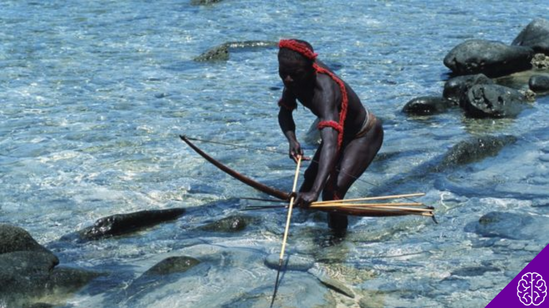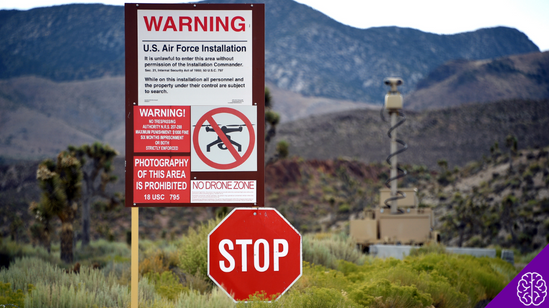Some say that “forbidden is more enjoyable,” but this doesn’t apply to the world’s forbidden places because you’ll never be able to enter them, no matter what you do.
But, do you know what these mysterious locations are and why the public is not allowed to visit them? In this guide, we will help you understand the reasons behind this hidden world beneath our feet that is denied to us.
So, continue reading in this Insight Factory guide and uncover the curiosities about the forbidden places, which, due to their intriguing nature, capture the imagination of adventurers and mystery enthusiasts!
What are the forbidden places to visit in the world?
The world is a vast place full of fascinating locations to explore. However, there are also some places that are off-limits.
These places may be forbidden for safety, environmental, or religious reasons. For this reason, they are beyond the reach of mere visitors like us.
So, follow along and satisfy your curiosity about the places shrouded in prohibitions!
1. Snake Island, Brazil: the refuge of venomous snakes
Located in Guanabara Bay, Rio de Janeiro, Snake Island earned its reputation due to the massive presence of venomous snakes, making it a strictly prohibited place for the public for safety reasons.
The island serves as a base for the Brazilian Navy, and the presence of highly venomous snakes contributes to its “restricted area” status.

Among the more than 15,000 venomous snakes that inhabit the island, the golden lancehead viper stands out, one of the world’s most venomous snake species.
In fact, regarding the concentration of snakes, according to research, the location is second only to Shedao Island in China, which houses around 20,000 of these animals.
Furthermore, the golden lancehead viper of Snake Island has the ability to climb trees, which is unnatural for the mainland lanceheads, and its venom is extremely toxic, capable of killing a person within six hours of a bite.
2. Chernobyl Exclusion Zone, Ukraine: the radioactive silence
Following the Chernobyl nuclear disaster in 1986, a vast area around the plant was designated as an Exclusion Zone, inaccessible to the general public.
The former Soviet Union cornered and isolated the disaster area, a piece of land measuring 1,040 square miles.

It was decreed that no one could enter the Chernobyl exclusion zone, except for some government employees, researchers, and scientists.
In the weeks following the disaster, the area was evacuated, where about 14,000 people had to move. The ghost town of Pripyat, once home to the plant workers, remains frozen in time, witnessing the devastating effects of radiation.
According to renowned scientists, it is believed that it will take at least 3,000 years for the area to become safe again, but this is just an estimate.
As Tim Mousseau, professor of Biological Sciences at the University of South Carolina, states:
“Some areas largely escaped the radioactive fallout and are not dangerous to visit or work in, while other areas remain heavily contaminated with a mix of radionuclides such as cesium-137, strontium-90, and plutonium-241 and will remain uninhabitable for centuries, if not millennia.”
The curiosity about what remains untouched and the resilient nature of wildlife in the area are aspects that fuel the imagination of those who dream of exploring the unknown.
3. North Sentinel Island, India: the land of the isolated
In the Bay of Bengal lies North Sentinel Island, inhabited by an indigenous tribe known for avoiding any contact with the outside world, living isolated from the rest of the world for centuries.
According to Ayeshea Perera, editor of the BBC’s Hindi service, the Sentinelese are among the last human beings to remain completely untouched by modern civilization.

The mystery surrounding the tribe is so great that it is unknown what language its members speak, nor how many there are (estimated to be between 50 and 150 people on the island).
The last time the tribe received attention was after the 2004 tsunami, when the Indian government needed to investigate whether they survived the disaster. The visit to the location was made by helicopter, and even then the authorities were greeted with arrows.
But, the danger is great. In 1974, a film director who visited the site to try to film a documentary for National Geographic received an arrow in the leg. In addition to him, in 2018, American tourist John Chau was killed by arrows. It is unclear whether he went to North Sentinel Island to preach Christianity or to live an adventure.
Due to their hostility towards strangers, Indian authorities strictly prohibit entry to the island, aiming to protect both visitors (due to the risk of death) and the indigenous people (risk of being contaminated with outside diseases).
The aura of mystery surrounding the traditions and preserved culture of these isolated people only increases the fascination with this unexplored place.
4. Area 51, United States: the epicenter of conspiracy theories
Located in the Nevada desert, Area 51 is a highly secretive American military base, known for fueling a plethora of conspiracy theories.
The location was only acknowledged in 2013 by the White House, which is situated in a remote area of southern Nevada, about 85 miles from the city of Las Vegas.

Forbidden to the general public, Area 51 is the focal point of speculations about extraterrestrial activities, secret experiments, and advanced technology.
Indeed, although the region is now visible in satellite images, it is illegal to fly over Area 51, which further attracts people’s curiosity.
The mystery surrounding this military installation creates an environment of speculation and questioning, fueling the imagination of enthusiasts of unexplainable phenomena.
Did you like learning about the forbidden places to visit in the world?
In each of these forbidden places to visit in the world, there is a unique narrative of secrecy, danger, and curiosity.
While they remain out of reach for most, these mysterious locations continue to captivate the imagination, inciting the search for answers and the exploration of the unknown. After all, it is the restricted nature of these places that makes them so irresistibly intriguing.
So, allow yourself to dream, question, and mentally explore these forbidden corners that fuel our thirst for discovery and adventure!


